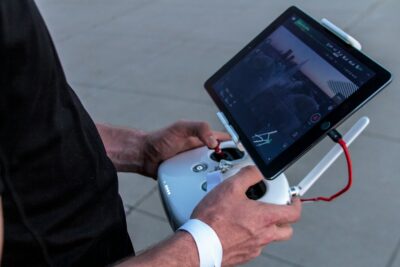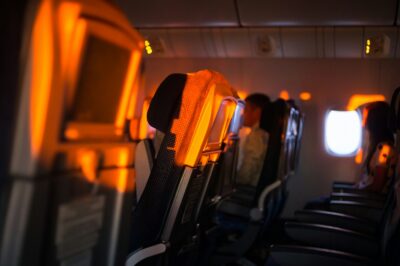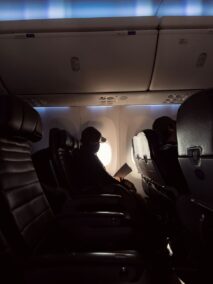Maximizing Passenger Engagement Through IFE Systems
The Role of In-flight Entertainment in Airline Marketing
In-flight entertainment advertising is a strategic tool that airlines use to deliver targeted advertising and promotional messages to a captive audience. As passengers spend hours on flights, IFE systems provide an ideal platform for engaging them with relevant content. This approach not only enhances the passenger experience but also creates additional revenue streams for airlines.
The integration of advertising into IFE systems starts with understanding passenger demographics and preferences. By leveraging data analytics, airlines can tailor advertisements to match the interests and behaviors of their passengers. For instance, business travelers may be shown ads for luxury hotels and high-end gadgets, while family vacationers might see promotions for theme parks and family-friendly resorts. This targeted approach ensures that advertisements are relevant and more likely to capture the attention of passengers.
Moreover, the in-flight environment presents a unique opportunity for advertisers to reach an audience that is relatively free from the usual distractions of daily life. Passengers are more likely to engage with content on the IFE system, making it an effective medium for advertisers. The high engagement rates translate into better conversion rates and a higher return on investment for advertising campaigns.
Implementing Effective Advertising Strategies
To maximize the effectiveness of in-flight entertainment advertising, airlines must implement well-thought-out strategies. This involves creating a seamless integration of ads within the IFE system, ensuring they are not intrusive but rather add value to the passenger experience. One effective approach is to use pre-roll ads that play before selected content, similar to how ads are displayed on streaming platforms. This method ensures high visibility without disrupting the viewing experience.
Another strategy is to offer interactive advertisements that encourage passenger engagement. For example, airlines can incorporate clickable ads that allow passengers to learn more about a product or service, enter contests, or access special offers. These interactive elements not only make the ads more engaging but also provide valuable data on passenger preferences and behaviors.
Additionally, airlines can leverage partnerships with various brands to enhance the appeal of their advertising content. Collaborations with well-known companies can bring exclusive deals and promotions to passengers, making the ads more attractive. For instance, a partnership with a leading hotel chain can offer passengers exclusive discounts on their next stay, creating a win-win situation for both the airline and the partner brand.
The Impact of Technology on IFE Advertising
Modern technology plays a crucial role in the evolution of in-flight entertainment advertising. Advances in artificial intelligence (AI) and machine learning enable airlines to deliver highly personalized advertising content. AI algorithms can analyze vast amounts of data to predict passenger preferences and tailor ads accordingly. This level of personalization increases the relevance of ads and enhances passenger satisfaction.
Blockchain technology also offers significant benefits for IFE advertising. By providing a secure and transparent platform for tracking ad performance, blockchain ensures that advertisers receive accurate data on engagement and conversions. This transparency builds trust between airlines and advertisers, encouraging more brands to invest in in-flight advertising.
Furthermore, the advent of the metaverse presents new opportunities for IFE advertising. Virtual reality (VR) and augmented reality (AR) experiences can be integrated into IFE systems, offering immersive advertising experiences. For example, passengers can explore a virtual showroom of a new car model or take a virtual tour of a holiday destination. These immersive ads provide a unique and memorable experience, increasing the likelihood of conversion.
Leadership and Management in IFE Advertising
Effective leadership and management are essential for the successful implementation of in-flight entertainment advertising strategies. Leaders must foster a culture of innovation and encourage the adoption of new technologies to enhance advertising efforts. This involves investing in advanced IFE systems and training staff to effectively manage and operate these technologies.
Executives and managers must also prioritize data-driven decision-making to optimize advertising strategies. By continuously analyzing data on passenger engagement and ad performance, leaders can make informed decisions about content updates and advertising placements. This iterative process ensures that advertising strategies remain relevant and effective, driving higher engagement and revenue.
Collaboration between different departments, such as marketing, IT, and customer service, is crucial for the seamless integration of advertising into IFE systems. Cross-functional teams can provide diverse perspectives and expertise, leading to innovative solutions and improved passenger experiences. By working together, these teams can ensure that advertising content is not only engaging but also aligns with the overall brand image of the airline.
Project Management in Implementing IFE Advertising
Project management plays a vital role in the successful deployment of in-flight entertainment advertising initiatives. Effective project managers must oversee the entire process, from planning and development to implementation and evaluation. This includes coordinating with various stakeholders, setting clear goals and timelines, and managing resources efficiently.
One of the key challenges in implementing IFE advertising is ensuring seamless integration without disrupting the passenger experience. Project managers must work closely with technology providers to develop ad delivery systems that are unobtrusive yet effective. This involves rigorous testing and quality assurance to ensure that ads load smoothly and do not interfere with the functionality of the IFE system.
Risk management is another critical aspect of project management in this context. Potential risks, such as technical glitches or negative passenger feedback, must be anticipated and mitigated. By developing contingency plans and monitoring performance closely, project managers can address any issues promptly, ensuring a smooth and successful implementation.
Conclusion: The Future of In-flight Entertainment Advertising
The future of in-flight entertainment advertising looks promising as airlines continue to leverage advanced technologies and data-driven strategies. By integrating AI, blockchain, and immersive technologies, airlines can deliver highly personalized and engaging advertising content that enhances the passenger experience. These innovations not only create additional revenue streams but also strengthen brand loyalty and passenger satisfaction.
Effective leadership, management, and project execution are critical to the success of these initiatives. Airlines must invest in the necessary resources and foster a culture of innovation and collaboration to fully realize the potential of in-flight entertainment advertising. As the industry evolves, those that prioritize advanced advertising strategies will undoubtedly lead the way in delivering exceptional passenger experiences.
Ultimately, the combination of targeted advertising, modern technology, and strategic management will transform the landscape of in-flight entertainment, setting new standards for passenger engagement and business success.
—
#InFlightEntertainment #IFEAdvertising #AirlineMarketing #PassengerEngagement #ModernTechnology #BusinessSuccess #LeadershipSkills #ProjectManagement























